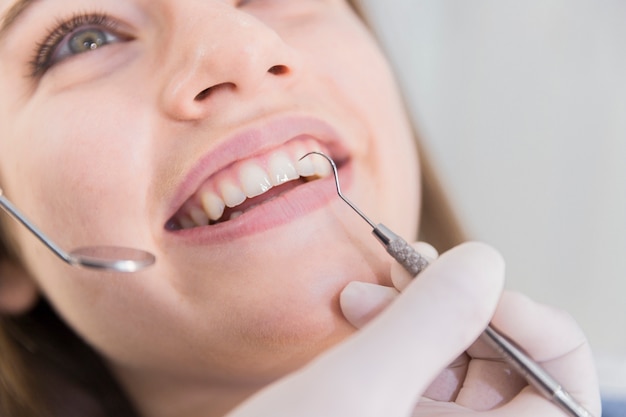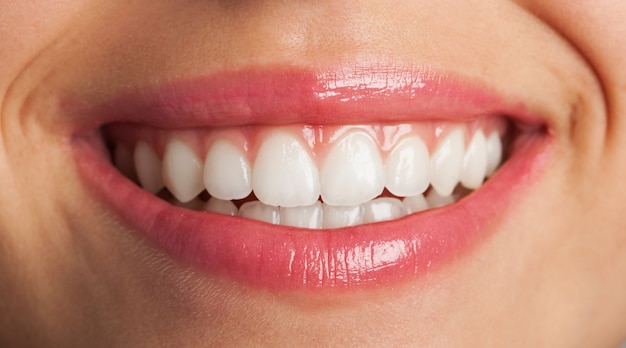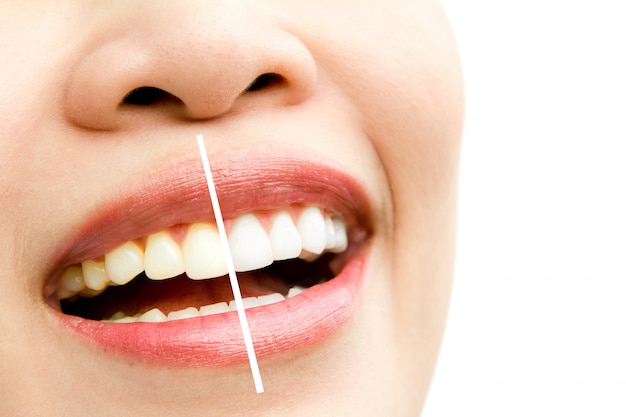There are many solutions to the problems of teeth and varied, we will address in this article the technique of contact lenses, the conditions of use, Voadha harmful and the way of implementation.

As we progress with knowledge, the options of dentists are wider than before, and thus the responsibility of the consumer to search and investigate about the most appropriate for him as well, we will discuss here the subject of contact lenses.
What are dental contact lenses?
Lenses are thin crusts made of ceramic materials, which are glued to the outside of the teeth and vary in color to suit the teeth.
A person can use a single crust to cover a broken tooth, or others may use it as a cosmetic option for teeth, placing 6-8 lashes to get a consistent smile.
Once the lenses are placed, they become permanent and can only be replaced by a medical procedure.
What types of dental lenses?
There are two types of materials that are made from their dental lenses, either porcelain or resin material, porcelain material may be a better choice in this case where they:
Resist stains and pigmentation more than resin
The light reflects closer to the natural teeth.
In any case, you will need to discuss the most appropriate option for you with your dentist.
The lenses cost an average of $ 925 for age or $ 2500 for all teeth, and can serve their owner for 10-15 years.
What are the benefits of dental lenses?
In fact, the benefits of dental lenses are limited to the cosmetic side, which is used for the following cosmetic conditions:
*Hiding broken or damaged teeth in shape.
*Fill the blanks between the teeth.
It is worth mentioning here that dental lenses do not contribute to the treatment of cavities, but on the contrary must repair all decay before placing them.
Disadvantages of dental lenses
In fact there are some drawbacks to dental lenses:
*The process of placing the lenses of the teeth requires the grinding and urging of part of the port of age, a step is not recoverable after a while.
*Lenses do not protect them from caries, which means you need to repair your teeth completely before putting it is a procedure by itself expensive.
*As mentioned earlier, dental lenses are expensive and therefore not an option for some.
Pre-placed dental lenses
 First, you should have an initial session with the doctor, in which the expectations are adjusted. When you tell him what your goal is to use a tooth lens, he may suggest you a different alternative or number of scales, so listen and discuss it in advance.
First, you should have an initial session with the doctor, in which the expectations are adjusted. When you tell him what your goal is to use a tooth lens, he may suggest you a different alternative or number of scales, so listen and discuss it in advance.
Before starting the procedure, the doctor will instruct you to have an X-ray of your teeth to examine your teeth if they need attention and treatment before you start your lenses.
If you notice that you have any abnormalities in your teeth, whether in caries, decay, gum disease, or even the need for a correction, most of you will have to start your treatment.
How are the lenses placed?
*The dentist removes about half a millimeter of tooth enamel, then using a special mold, the doctor takes a sample of your teeth to send to the lab to build lenses or peel for you.
*It takes about a week or two to set up the lenses, after which the doctor communicates with you to get started.
*In the beginning, your doctor will make sure that the size and color of your lenses are appropriate for your teeth. Once done, your teeth will be thoroughly cleaned to ensure that the bacteria do not grow under the lenses.
*After cleaning, the doctor will use the milling machine to tighten the surface of the teeth to succeed to paste the lenses better, then put the cement and paste the special lenses.
*Using ultraviolet light from drying the cement directly to get out of the doctor's office will be ready. All this process takes place within two hours to two and a half hours.
How are dental lenses treated?
Unlike other treatments you may receive from your dentist, once you have the lenses you will be able to eat your food normally. However, local anesthesia may be used for some time until the effect is eliminated.
Porcelain toothbrushes usually serve 10-15 years, while resin is 5 to 7 years old, provided your teeth are well cared for under the following conditions:
1-Do not chew hard and hard things like snow and nails.
3-Preferably chew and eat foods with back teeth not frontal
When exercising, wear a mouth protector.
4-If you have a toothache, you should wear the protector at night.



No comments:
Post a Comment